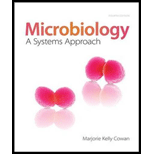
Concept explainers
To describe:
Hepatitis B infections caused by a needlestick during a dental procedure by using the terms given in question, also determine the mode of transmission of the following disease.
Introduction:
Hepatitis B is a disease of liver which is caused by infection of virus. The virus responsible for hepatitis B is HBV (hepatitis B virus) and it belongs to Hepadnaviridae family of viruses.
To describe:
Pneumocystis pneumonia in an AIDS patient and also determine the mode of transmission of the following disease.
Introduction:
HIV is human immunodeficiency virus which causes a very serious disease called AIDS (acquired immunodeficiency syndrome). HIV interferes with the immune cells of the body and reduces the ability to fight infections.
To describe:
Bubonic plague that is acquired through the bite of a rat flea, and also determine the mode of transmission.
Introduction:
Bubonic plague is a type of bacterial infection caused by bacterium Yersinia pestis. This plague may have deadly effects. It can be spread from the bite of an infected rodent or flea. The plague is characterized by symptoms like fever, headache, swollen and painful lesions, and vomiting.
To determine:
Hantavirus pulmonary syndrome infection acquired while vacationing in a log cabin.
Introduction:
Hantavirus pulmonary syndrome is a viral infection which develops its symptoms within a week. It is a fatal, respiratory disease that occurs in human by infection caused by hantaviruses.
To describe:
The disease salmonellosis and also determine the mode of transmission.
Introduction:
Salmonellosis is a type of bacterial infection caused by the strain of Salmonella bacterium. This bacterium mainly transmitted to humans through contaminated food or water. The infection results in typhoid fever and sometimes it causes severe deadly disease.
To describe:
The undiagnosed chlamydiosis and also determine the mode of transmission of the disease.
Introduction:
Chlamydiosis is a common sexually transmitted disease. It is caused by the bacteria called Chlamydia trachomatis. It can infect both men and women. Chlamydia doesn’t usually cause any symptoms.
To describe:
The disease mononucleosis that is transmitted via a shared drinking glass.
Introduction:
Respiratory droplet and saliva is the exit route for several viruses, including those of mumps, rabies, and infectious mononucleosis. Mononucleosis includes a viral disease caused by Epstein-Barr virus.
To describe:
The disease neonatal gonorrhea and also determine the mode of transmission of this disease.
Introduction:
Gonorrhea is a sexually transmitted disease which causes infection in the reproductive part of females. This infection can also pass to the newborns known as neonatal gonorrhea.
Want to see the full answer?
Check out a sample textbook solution
Chapter 13 Solutions
Microbiology: A Systems Approach
- Molecular Biology Question A gene that codes for a protein was removed from a eukaryotic cell and inserted into a prokaryotic cell. Although the gene was successfully transcribed and translated, it produced a different protein than it produced in the eukaryotic cell. What is the most likely explanation?arrow_forwardMolecular Biology LIST three characteristics of origins of replicationarrow_forwardMolecular Biology Question Please help. Thank you For E coli DNA polymerase III, give the structure and function of the b-clamp sub-complex. Describe how the structure of this sub-complex is important for it’s function.arrow_forward
- Molecular Biology LIST three characteristics of DNA Polymerasesarrow_forwardMolecular Biology RNA polymerase core enzyme structure contains what subunits? To form holo enzyme, sigma factor is added to core. What is the name of the structure formed? Give the detailed structure of sigma factor and the function of eachdomain. Please help. Thank youarrow_forwardMolecular Biology You have a single bacterial cell whose DNA is labelled with radioactiveC14. After 5 rounds of cell division, how may cells will contain radioactive DNA? Please help. Thank youarrow_forward
- 1. Explain the structure and properties of atoms and chemical bonds (especially how they relate to DNA and proteins). Also add some pictures.arrow_forward1. In the Sentinel Cell DNA integrity is preserved through nanoscopic helicase-coordinated repair, while lipids in the membrane are fortified to resist environmental mutagens. also provide pictures for this question.arrow_forwardExplain the structure and properties of atoms and chemical bonds (especially how they relate to DNA and proteins). Also add some pictures.arrow_forward
- In the Sentinel Cell DNA integrity is preserved through nanoscopic helicase-coordinated repair, while lipids in the membrane are fortified to resist environmental mutagens. also provide pictures for this question.arrow_forward1. Explain how genetic information is stored, copied, transferred, and expressed. Also add some pictures for this question.arrow_forward!. Describe biological macromolecules (DNA, RNA, proteins, lipids, etc.) and how they function in the cell. also provide some images for this question.arrow_forward
 Comprehensive Medical Assisting: Administrative a...NursingISBN:9781305964792Author:Wilburta Q. Lindh, Carol D. Tamparo, Barbara M. Dahl, Julie Morris, Cindy CorreaPublisher:Cengage LearningHealth Safety And Nutrition F/Young ChildHealth & NutritionISBN:9781305144767Author:MAROTZPublisher:Cengage
Comprehensive Medical Assisting: Administrative a...NursingISBN:9781305964792Author:Wilburta Q. Lindh, Carol D. Tamparo, Barbara M. Dahl, Julie Morris, Cindy CorreaPublisher:Cengage LearningHealth Safety And Nutrition F/Young ChildHealth & NutritionISBN:9781305144767Author:MAROTZPublisher:Cengage- Surgical Tech For Surgical Tech Pos CareHealth & NutritionISBN:9781337648868Author:AssociationPublisher:Cengage





